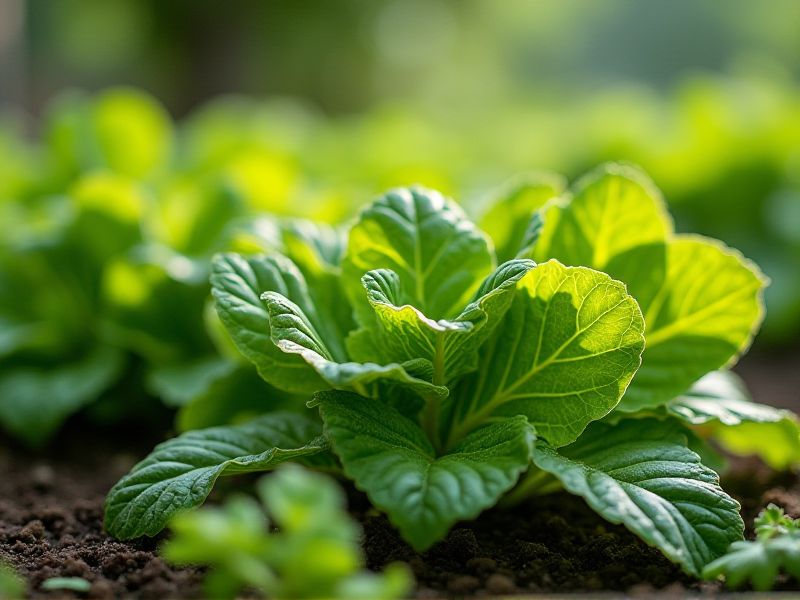
Many edible plants thrive with minimal water, making them ideal for sustainable gardening in arid climates. For instance, succulents like agave and cactus pads can be harvested for culinary uses, offering unique flavors and nutrients. Additionally, herbs such as rosemary and thyme are drought-resistant, providing seasoning options while conserving water resources. Vegetables like okra and sweet potatoes also perform well in low-water conditions, yielding a bountiful harvest with reduced irrigation needs. By incorporating these water-efficient plants into your garden, you can enjoy fresh produce without depleting precious water supplies.
List of some Edible plants that require little water
- Prickly Pear (Opuntia ficus-indica)
- Agave (Agave tequilana)
- Moringa (Moringa oleifera)
- Mesquite (Prosopis glandulosa)
- Purslane (Portulaca oleracea)
- Mustard Greens (Brassica juncea)
- Amaranth (Amaranthus spp.)
- Quinoa (Chenopodium quinoa)
- Jicama (Pachyrhizus erosus)
- Tepary Bean (Phaseolus acutifolius)
Important things about Edible plants that require little water
Drought-Resistant Varieties
Drought-resistant edible plants, such as amaranth, quinoa, and various types of succulents, thrive in arid conditions while providing essential nutrients. These plants have adapted to conserve water, making them ideal for regions with limited rainfall or where sustainable gardening practices are prioritized. Incorporating these varieties into your garden can not only reduce water usage but also enhance biodiversity and resilience. Growing such plants supports ecological balance while ensuring a productive harvest, even in challenging climates.
Native Plants Adapted To Local Climates
Native plants, such as amaranth and purslane, thrive in arid environments and require minimal water for growth. These resilient edible plants not only provide nutritious food options but also contribute to local biodiversity and ecosystem health. By incorporating them into your garden, you can create a sustainable landscape that supports wildlife while minimizing water usage. Exploring local sources for these native edibles can further enhance your diet with unique flavors and textures while promoting environmental conservation.
Succulents With High Moisture Retention
Succulents are excellent candidates for edible plants that thrive on minimal water, making them perfect for arid climates or low-maintenance gardens. Notably, varieties such as Aloe Vera, with its juicy leaves, not only offer hydration but also have medicinal properties and can be incorporated into various dishes. Another edible succulent is Hens and Chicks (Sempervivum), which can be used in salads and garnishes. By incorporating these moisture-retentive plants into your culinary repertoire, you can enjoy both the aesthetic and practical benefits of low-water gardening.
Perennial Plants That Survive Dry Seasons
Consider incorporating perennial edible plants like asparagus and rhubarb into your garden, as they thrive in dry conditions and require minimal water once established. These resilient plants not only provide delicious harvests but also contribute to sustainable gardening practices by reducing irrigation needs. Herbs such as oregano and thyme are excellent choices for dry environments, offering rich flavors to your dishes while being drought-tolerant. By selecting these hardy perennials, you can create a productive landscape that aligns with water conservation efforts.
Xeriscaping Techniques For Sustainable Gardening
Xeriscaping emphasizes sustainable gardening by utilizing drought-resistant edible plants, which significantly reduce water consumption. Consider incorporating varieties like oregano, thyme, and sage, which thrive in arid conditions and provide robust flavors for your culinary endeavors. Another excellent option is the hardy fruit-producing cactus, such as prickly pear, known for its low water requirements and nutrient-rich pads and fruit. By adopting these xeriscaping principles, you can cultivate a productive garden that contributes to environmental conservation while enjoying home-grown produce.
Edible Herbs With Low Water Needs
Edible herbs that thrive with minimal water include rosemary, thyme, and sage, all known for their aromatic qualities and culinary versatility. These drought-resistant plants not only enhance dishes with their flavors but also contribute to sustainable gardening practices by conserving water resources. Incorporating such herbs into your garden allows you to enjoy fresh ingredients while minimizing environmental impact. Their resilience to dry conditions makes them ideal for xeriscaping and low-water landscape designs.
Techniques For Efficient Irrigation
Drip irrigation is one of the most efficient techniques for watering edible plants that require minimal water, targeting roots directly to reduce evaporation and waste. Selecting drought-resistant crops such as succulents, certain herbs, and native vegetables--like amaranth or quinoa--can also significantly decrease your water consumption. Implementing mulching can further retain soil moisture, promoting sustainable growth while minimizing water supply needs. Evaluating soil quality and moisture levels through regular testing ensures that you're meeting the specific hydration needs of your plants efficiently.
Soil Amendments To Retain Moisture
Incorporating soil amendments such as organic matter, compost, and mulch can significantly enhance moisture retention for edible plants, making them suitable for arid conditions. Certain drought-resistant plants like succulents, native herbs, and Mediterranean varieties--such as rosemary and thyme--thrive with minimal watering. By improving soil structure and nutrient availability, these amendments create a conducive environment for robust growth, even with limited water supply. You can cultivate a sustainable garden by selecting these resilient plants and employing effective moisture-retaining techniques.
Companion Planting For Water Conservation
Companion planting not only enhances growth but also promotes water conservation by optimizing plant relationships that require minimal hydration. For instance, combining drought-resistant edible plants such as rosemary, thyme, and lavender with deeper-rooted vegetables like carrots and beets can effectively reduce evaporation and increase soil moisture retention. Incorporating these plants in your garden allows for efficient water use while ensuring diverse and flavorful yields that thrive in arid conditions. Your garden benefits from this strategy, as the plants' synergies help create a more resilient ecosystem that conserves water resources.
Seasonal Planting To Align With Rainfall Patterns
When selecting edible plants that require minimal water, consider drought-tolerant varieties such as succulents, which include edible species like agave and certain types of cactus. Herbs like rosemary, lavender, and sage thrive in arid conditions, making them excellent choices for low-water gardens. Additionally, incorporating native plants, such as amaranth and purslane, can enhance biodiversity while providing nutritious greens. By aligning your seasonal planting with local rainfall patterns, you can cultivate a sustainable food source that requires less irrigation and supports the environment.
